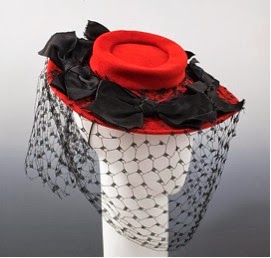Everyone wants
to keep up with the trends of their time. The clothes we wear not only make us look
good but they represent the time period in which we are living and who we are
as a person. My exhibit, “Fashionista” covers fashion trends from ancient Egypt
to modern day, consisting of dresses, shoes, hats and scarfs. Since we use the
expression from outfitted ourselves from “head to toe”, I chose to display my
objects from the hats people wore to the shoes they walked in. One work displayed in my exhibit, “Titleholder’s
Hat”, played a huge role for men in the Kuba Kingdom as a formal admission to
adulthood. A male who received this cap was accepted into adulthood and was
ready to take responsibility in the Kingdom. In the 19th century, there existed a trend
amongst chinese women to wrap their feet around or wear lotus shoes so they can
have tiny feet. This trend demonstrates the great influence of fashion on women
due to their willful subjection to pain in order to fit in. The oldest object
in my exhibit is the “Belt Buckle”, created during the Frankish Empire in the 6th century. Although this work is significantly dated, it
possesses a certain familiarity to us because we have belt buckles like these
nowadays. Working on this project I came to a conclusion that every time period
has a different type of trend, which effects people greatly. All these fashion
trends inspired cultures to create their own ideas.
Kuban
“Titleholder’s Hat (Laket mishiing)”
19th-20th century
Arts of Africa, Oceania and the Americas
Bergdorf Goodman
“Hat”
1944
Costume Institute
Sally Victor
“Hat”
1945
Costume Institute
French
“Scarf”
1790-1810
Costume Institute
Ulrich Apt the Elder
“Portrait of a Man and His Wife”
1512
European Paintings
French Painter
“Henri III, King of France”
16th century
European Paintings
probably Mexican
“Toreador Suit”
fourth quarter 19th century
Costume Institute
Domenico Dolce & Stefano Gabbana
“Dress”
2007
Costume Institute
11.
- Frankish Empire
“Belt Buckle”
675-725
Medieval Art
Chinese (Han Dynasty)
“Lotus Shoes”
late 19th-20 century
Costume Institute










No comments:
Post a Comment